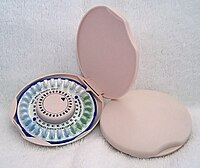
Photo from wikipedia
Whether the growth of embryos after a period of stunt becomes accelerated (Catch-Up Growth, CUGr), as it occurs postnatally, has rarely been examined experimentally in any class of animals. Here,… Click to show full abstract
Whether the growth of embryos after a period of stunt becomes accelerated (Catch-Up Growth, CUGr), as it occurs postnatally, has rarely been examined experimentally in any class of animals. Here, hypoxia or cold of different degrees and durations caused growth retardation in chicken embryos during the first or second week of incubation. On average, on the day of removal of the growth-inhibition, the weight of the experimental groups was 73% (wet) and 61% (dry) of control embryos, while near end-incubation (embryonic day E18) their weight averaged significantly more, respectively, 80% and 84% of controls (P < 0.001). When compared as function of developmental time, the post-intervention growth of experimental embryos was faster than that of controls. The faster growth was fully accounted for by their smaller weight at end-intervention, because embryonic growth is higher the smaller the weight. Hence, their growth was appropriate for their weight, rather than for their age. In fact, out of eight different models of growth based on age and weight (wet or dry) in various combination, the model based on embryonic wet weight at end-intervention, and weight alone, was the best predictor of the embryo's post-intervention growth. The oxygen consumption of the experimental embryos during CUGr was appropriate for their weight. In conclusion, in this experimental model of CUGr, the embryo's weight at the end of a stunt could fully predict and explain the rate of growth during the post-intervention recovery period.
Journal Title: Mechanisms of Development
Year Published: 2019
Link to full text (if available)
Share on Social Media: Sign Up to like & get
recommendations!